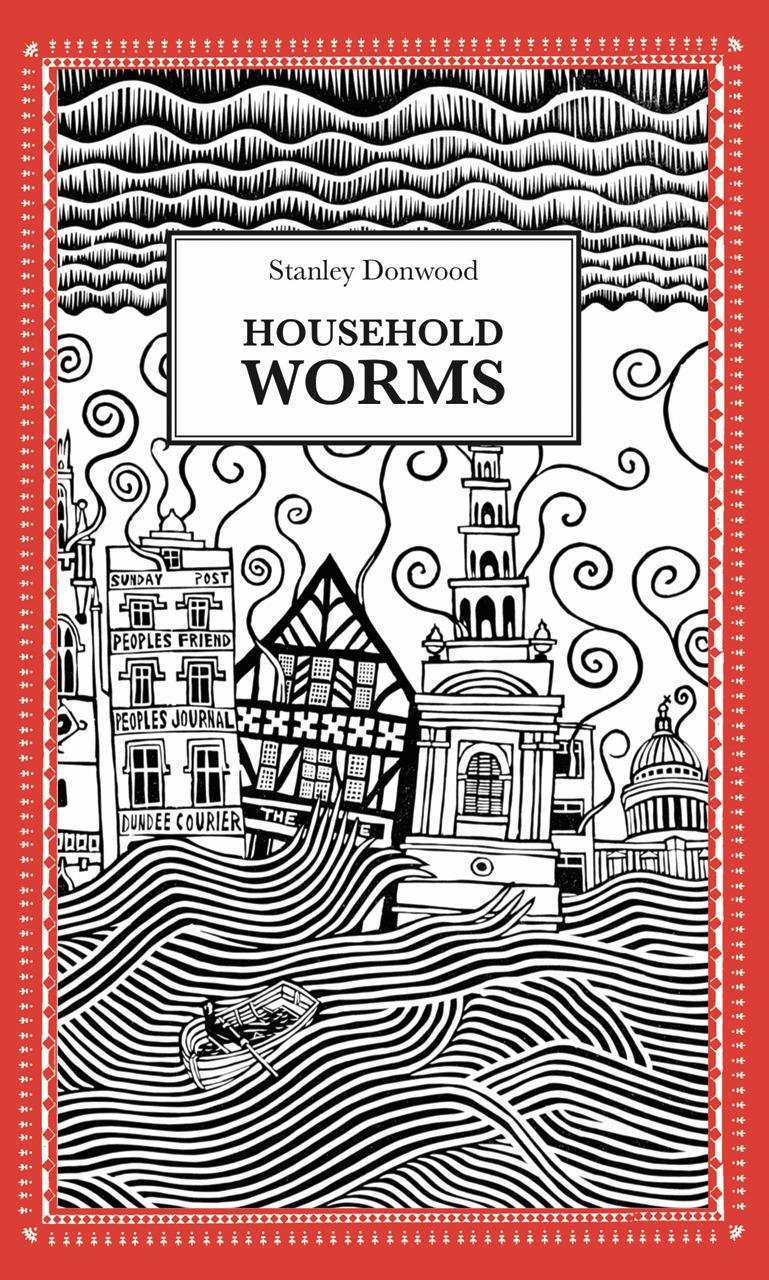Stanley Donwood’s hallucinatory visions of the future should terrify us all
- Text by Robbie Wojciechowski
- Photography by James Arthur Allen

There’s a sense of alarm in Stanley Donwood’s voice as he speaks to Huck about his secretive anti-nuclear installation the bomb. He’s remembering his early days back in his hometown of Colchester, when nuclear war seemed imminent and where visions of a landscape bellowing with mushroom clouds felt all too real.
Stanley’s early experiences of radical politics, CND marches, TV infomercials on nuclear disasters and suburbanites began to inspire his work. They were like, “monochrome versions of Paul Nash’s war paintings transported to Suburban Oxford,” says Stanley.
Ever since, Stanley’s work has moonlighted in a number of different areas. There’s the all-too-famous work he’s done on all the Radiohead releases since 1994’s ‘My Iron Lung’.
Donwood’s work still channels much the same energy – aggression, worry, and a strong sense of place. Here’s Huck’s playlist on the artist himself – think of it like a sketchbook of inspiration.
Paul Nash’s ‘WAR’ series

The first in our playlist should rightfully be a nod to Paul Nash, and his surrealist landscape work. Stanley often talks about being inspired by Nash – channelling his visions of Britain, ripped apart by bombs, war and destruction. In these images, we see trees torn bare of their leaves, landscapes with little more than rooks where hidden rodents huddle for safety amidst gunfire and grenades.
Archie Ticktin’s With Donwood: An Intimate Portrait
Stanley has always had a close and tightly-guarded working process. But this little film by Archie Ticktin offers fans a wonderful insight into the studio, ahead of exhibiting his London Views series, famously used as the artwork for Thom Yorke’s solo record The Eraser. In the film we get a glimpse into Stanley’s studio, as well as seeing him screen-printing some of his work.
A 66-step guide to creating the artwork from A Moon Shaped Pool

This one can only be found within the physical release of Radiohead’s A Moon Shaped Pool – but in the ‘inconsequential pamphlet’, Stanley runs us through the steps that went into creating the own artwork. This offering gives fans and friends a chance to give the artwork a go from themselves. Again, however mocking, it’s a fascinating insight into the torturous process that goes into each artwork.
Try Reading Household Worms – Stanley’s first book

‘These were written to avoid staring for too long at a night-filled window that only reflected my own sorry-for-itself face. Perhaps I should try writing with white wine too. A lighter tone may emerge. Champagne would probably get me writing jokes for crackers. Never mind, never mind.’
At least that is his way of presenting it. Household Worms is 128-page piece containing stories written by the man himself and is a selection of his prose alongside his artwork. It has been talked about as a ‘intriguing flash fiction of self-deprecating humour’. This is one for intimate fans of Donwood.
Visit and walk The Broomway

One of Stanley’s latest fascinations, The Broomway is a bypass off the foreshore in Essex. A place of notoriety, it’s a creek that many shy away from, for it’s disorientating lack of difference between sea and sky and encroaching riptide, means many avoid it. More recently, it inspired a piece of work by Stanley, to go with a record he was releasing on his own label, Six Inch Records. To read more, have a look on Stanley’s blog.
This playlist expands on an article that originally appeared in Huck 55 – The Freaked Out Issue. Buy it in the Huck Shop now or subscribe to make sure you never miss another issue.
Enjoyed this article? Like Huck on Facebook or follow us on Twitter.
Latest on Huck

Analogue Appreciation: lullahush
Ithaca — In an ever more digital, online world, we ask our favourite artists about their most cherished pieces of physical culture. Today, it’s Irish retro-futurist lullahush.
Written by: lullahush

Spyros Rennt captures connection and tenderness among Berlin’s queer youth
Intertwined — In the Greek photographer’s fourth photobook, he lays out spreads of togetherness among his friends and the German capital’s LGBTQ+ party scene.
Written by: Isaac Muk

The rebellious roots of Cornwall’s surfing scene
100 years of waveriding — Despite past attempts to ban the sport from beaches, surfers have remained as integral, conservationist presences in England’s southwestern tip. A new exhibition in Falmouth traces its long history in the area.
Written by: Ella Glossop

Plestia Alaqad: “Journalists should focus on humanising people”
Huck’s April interview — Having become one of the most crucial and followed voices from inside Gaza in the aftermath of October 7, the award-winning author and journalist is releasing a new memoir, ‘The Eyes of Gaza’, collating diary entries made over the past 18 months. We caught up with her to hear more about it.
Written by: Isaac Muk

The instrument makers taking DIY music to a whole new level
What does it take to construct a modular synth? How do you turn a block of wood into a double bass? Here, four craftspeople explain why they chose to rip up the rulebooks and build their own music-making machines.
Written by: Daniel Dylan Wray

Southbank Centre reveals new series dedicated to East and Southeast Asian arts
ESEA Encounters — Taking place between 17-20 July, there will be a live concert from YMO’s Haruomi Hosono, as well as discussions around Asian literature, stage productions, and a pop-up Japanese Yokimono summer market.
Written by: Zahra Onsori